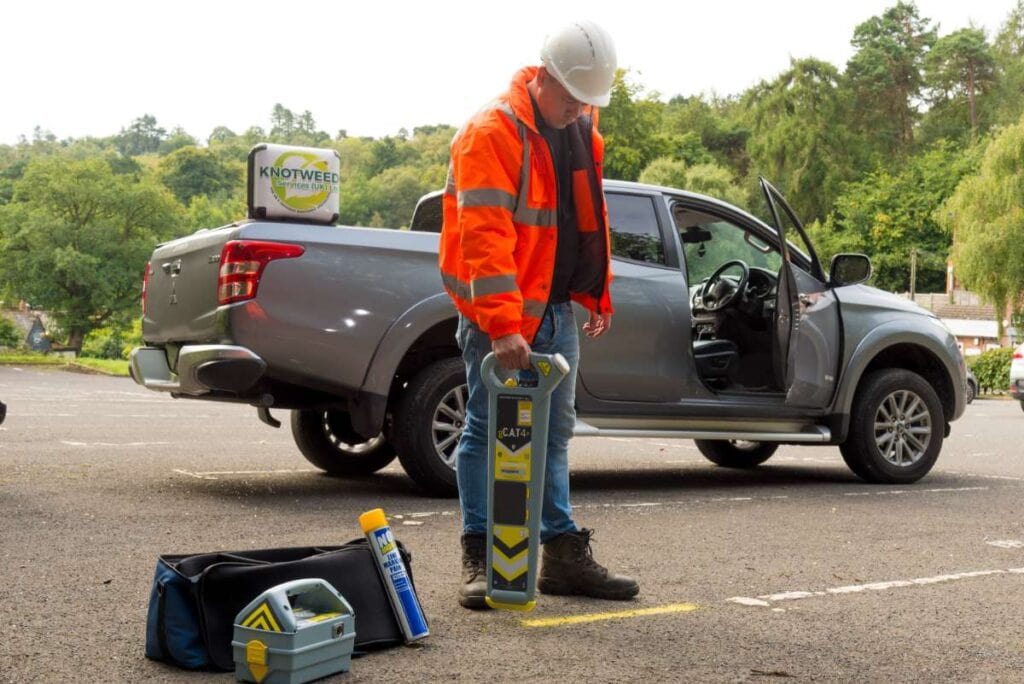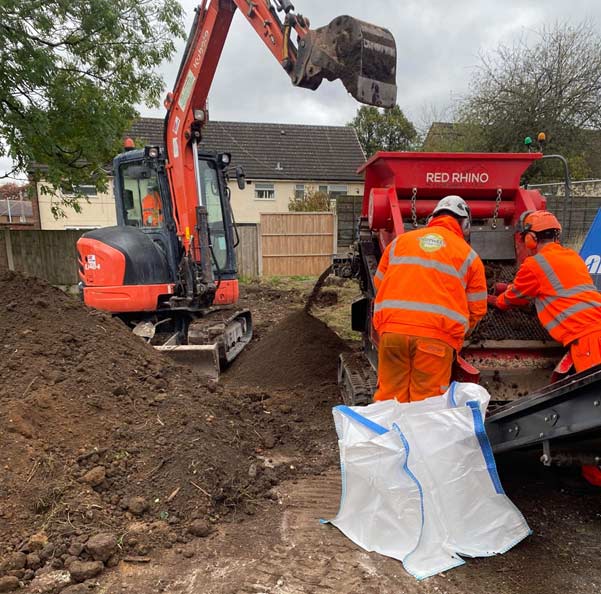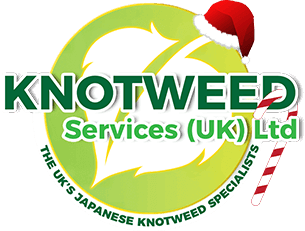JAPANESE KNOTWEED REMOVAL Southampton
4
LIVE KNOTWEED JOBS IN Southampton
42
SUCCESSFUL KNOTWEED REMOVAL PROJECTS IN Southampton
100%
SUCCESSFUL PROPERTY SALES AFTER TREATMENT
9
Southampton BASED KNOTWEED STAFF
NO OTHER JAPANESE KNOTWEED COMPANIES IN Southampton HAVE OUR TRACK RECORD
Meet the experts in Japanese knotweed removal. As one of the leading Japanese knotweed removal companies located in Southampton, Knotweed Services offers prompt, efficient Japanese knotweed treatment, control, and removal for properties located in or around Southampton.
Knotweed Services is a member of the PCA, a trade body for treating and controlling invasive weeds. We follow the latest treatment and removal techniques for Japanese knotweed removal.
For knotweed eradication to be successful, identification, surveying, treatment, and prevention must occur. Our company can help you by providing these services.
The Truth About Japanese Knotweed
Japanese knotweed is one of the most aggressive plants in the UK. It spreads quickly and has the potential to damage buildings, homes, and other property. At Knotweed Services, we conduct detailed surveys to detect how invasive your Japanese knotweed is. We provide detailed quotes and plans, giving you an accurate assessment of the situation and recommendations for any necessary action.
If you’re a commercial land or property owner and knotweed is present, your project could be delayed until the harmful plant is removed.
Japanese Knotweed: What it is and How to Deal With It
- Japanese knotweed can grow through tarmac and concrete, threatening your building’s integrity.
- Mortgage lenders are concerned about the presence of Japanese Knotweed in buildings they are considering investing in.
Knotweed produces massive annoyance that obstructs visibility and access to paths, highways and other infrastructure. It is a particular nuisance for commercial properties.
Knotweed Services – We offer a guaranteed solution to Japanese knotweed in Southampton. All of our services are guaranteed for years to come.



FREE IDENTIFICATION
Fill in the form below, attach your pictures and we’ll let you know if the plant in your picture is Japanese Knotweed.
Call us ASAP to undertake the treatment and management of your infestation in Southampton
Call us on: 0121 725 6348 or 0800 689 4146 for an on the spot estimate
From the first point of contact, Knotweed Services will support you through the entire process.
RESIDENTIAL JAPANESE KNOTWEED REMOVAL Southampton.
WHAT YOU NEED TO KNOW ABOUT JAPANESE KNOTWEED REMOVAL Southampton
Japanese knotweed infestations vary widely from property to property, so it’s not surprising that treatment and control methods will too. It may be necessary to use one method or a combination of knotweed removal methods on one property.
As we work with nature, our Japanese Knotweed specialists consider all factors and choose the best way to deal with Japanese Knotweed. We offer a guarantee covering Japanese Knotweed treatment.
— JAPANESE KNOTWEED REMOVAL OPTIONS AVAILABLE IN Southampton

FOLIAR SPRAYING *
Spraying of powerful chemicals with a knapsack is the most common treatment for Japanese knotweed. We ensure that other plants are not damaged when spraying, and we spray only in springtime.

FOLIAR LEAF WIPING *
With this Japanese knotweed treatment we employ a device to ‘physically wipe’ our chemicals onto the Japanese Knotweed leaves. This application is so precise that we can often use a higher concentration of chemical.

STEM INJECTION
A measured amount of herbicide is applied directly to the invading plant. This is the most ingenious way of elimination because the herbicide is injected straight into the Japanese Knotweed. Not dependant on weather conditions.

BIOMASS REDUCTION
We only remove the soil that has been afflicted with Japanese Knotweed when we use biomass, which is a type of excavation and removal. Reusing the soil makes it a great approach for controlling Japanese knotweed. decreasing landfill usage.

CROWN REMOVAL
Crown and stems are capable of regenerating and even small fragments of cut crown or stem are capable of regenerating and becoming a new invasive weed – removing these from the equation is a great strategy.
— COMMERCIAL TREATMENT OPTIONS AVAILABLE IN Southampton

SOIL SCREENING
A tried-and-true technique utilised on hundreds of sites throughout the UK.
The rhizome material of Japanese knotweed is isolated from the soil material by means of screening. The Japanese knotweed debris is subsequently transferred to a licenced landfill at a substantially reduced disposal rate, or it is burnt on-site with an exemption D6 from the Environment Agency or Natural Resources Wales.
The cleansed soils can then be reapplied elsewhere, typically in soft landscaping areas where they will not interfere with construction.
This can greatly minimise landfill and backfill expenses while also reducing the site’s carbon footprint due to fewer trips to the dump by vehicle.

BIOSECURITY SUPERVISION
We could send a biosecurity specialist to your site to keep an eye on any soil movements or excavations that can disturb Japanese knotweed.
We can set up a location at the site entry where individuals can wash their boots and equipment as part of these precautions. All toolbox discussions, which will be signed by all on-site contractors involved in the operation, will be provided to the principal contractor by us.
Where biosecurity is required, we may offer ad hoc geotextile barriers.
We will deliver a thorough biosecurity report to the client after the task is finished.
This approach can be utilised in conjunction with several on-site therapy approaches.

EXCAVATION AND DISPOSAL
This treatment method is ideal where time constraints are present and there’s no other option other than to remove both the Japanese Knotweed and contaminated soil to a registered landfill.
By removing all traces of the infestation quickly, this offers a rapid solution to your problem and allows your commercial project to begin groundwork’s almost straight away. When time is of the essence, there is no quicker Japanese Knotweed removal/treatment method.
Any waste taken off-site will be done so with a licensed waste carrier to a suitably authorised landfill site.

CELL BURIAL
Cell burial comprises of moving Knotweed contaminated soil from one location on site, burying it in an excavated pit which is lined with a root barrier membrane, in a different position on the site.
The burial requirements for Japanese Knotweed are as follows:
- The Environment Agency recommends that the top of the burial cell should be a minimum of 2 metres below ground level.
- The overall depth of the burial pit should be in excess of 5 metres deep. All root barrier seams are welded together forming an encapsulated cell from which the Japanese Knotweed cannot escape. Clean soil is then used to backfill on top of the cell.
- To prevent accidental disturbance of the burial site, it is recorded on all site plans and future land owners should be made aware of the location.

STOCKPILE & TREAT
Japanese knotweed-contaminated soil can be moved to another portion of the site being treated using a technique called bunding. A bund is a patch of polluted soil that is only a few metres deep.
To make the surface flush with the surroundings, the bund can either be lifted, placed on top of the land, or positioned inside an excavation.
The bund’s function is to relocate the Japanese knotweed to an inactive portion of the land. The Japanese knotweed may now be treated, which would not have been possible in its original location.

HERBICIDE APPLICATION
At Knotweed Services we can provide the client with bespoke treatment plans depending on the locations of the Japanese knotweed.
These plans can work in conjunction with other methods of treatment where access is limited to pedestrian movements i.e., embankments or existing pathways within a site.
This will normally consist of up to 3 visits per annum to apply herbicide by either foliar spray technique or stem injection during the growing season over a period of 3 years, with a monitoring period of 2 years thereafter.
We would select the appropriate herbicides depending on the surrounding foliage or environmental constraints.
After each visit a full treatment record would be provided with photos showing the progress of the works and then an annual report.
